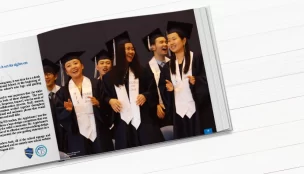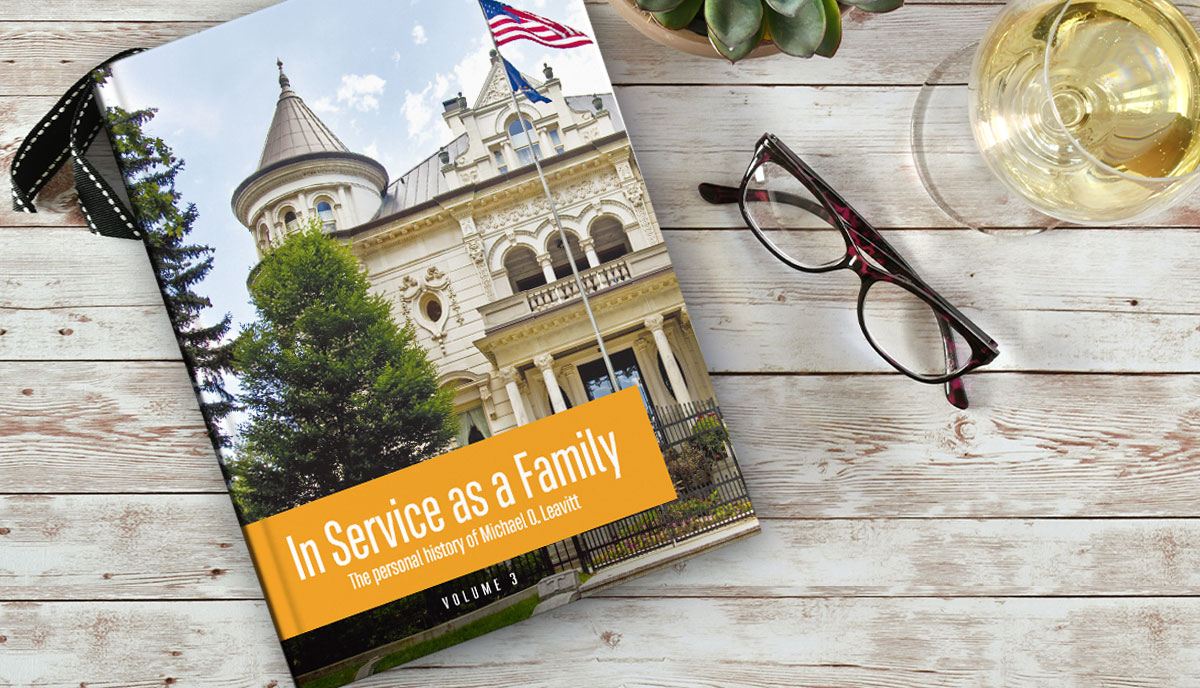Our complete guide to everything you need to write and design a memorable college yearbook
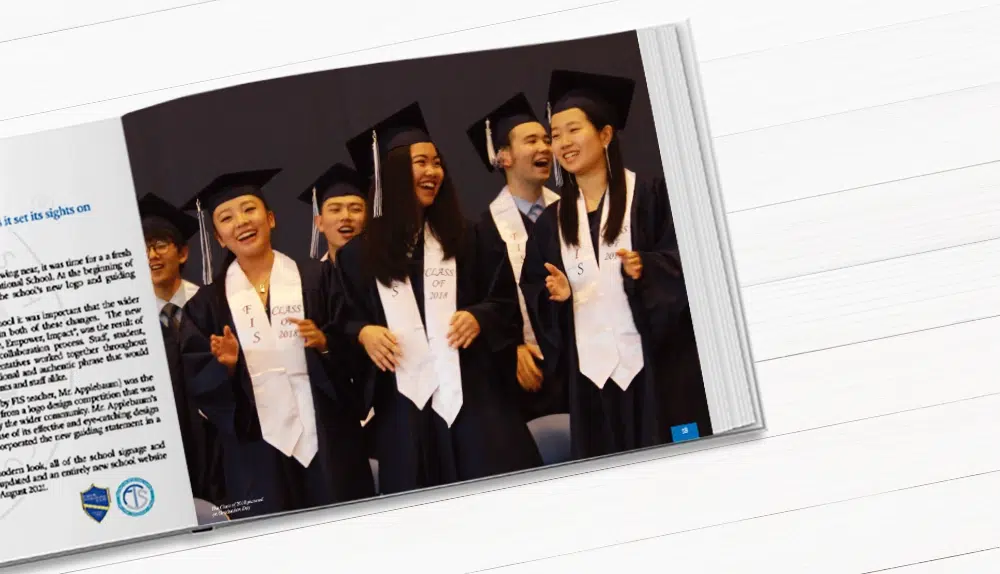
Are you ready to embark on the exciting journey of creating a college yearbook that captures the unique qualities of your university experience? Designing a yearbook is not only a challenging and satisfying creative endeavor but also an opportunity to celebrate and preserve the memories of your students' college years and create a record for the college archive. In this post we'll give you a comprehensive guide, exploring the key steps and strategies to help you craft a truly memorable college yearbook that your students will cherish for the rest of their lives.
Getting started with your college yearbook
Writing and designing a college yearbook is an incredible opportunity to capture the spirit, achievements, and memories of your university students' journey. It allows you to create a tangible keepsake that students and alumni will treasure for years to come. A well-crafted yearbook should not only be visually appealing but also informative, reflecting the vibrant and diverse experiences of your college community.
In this post, drawing on almost 30 years of experience as a highly successful international offset printing service—during which we've helped innumerable colleges produce stunning yearbooks—we'll walk you through the step-by-step process of creating a college yearbook. From planning and designing to compiling content, printing, and promoting the final product, we will provide you with valuable insights and tips to make sure your yearbook stands out and leaves a lasting impression. Enough preamble already! Let's do this.
Planning your yearbook
Before diving into the creative aspects of designing your yearbook, we can't overstate how important it is to establish a solid foundation through the careful planning of every aspect and stage of design and production. This includes:
- defining your theme
- setting goals and objectives
- establishing a timeline
- and assembling a dedicated yearbook team
In our decades of experience, we find that most colleges rightly see the yearbook as an opportunity to get involved in a creative collaboration between students and staff, drawing on the skills, knowledge, and experience of the students themselves, with the support, encouragement, and input of the staff to help develop a project that represents the college as a community and the achievements of individual students. So, to help you lay a solid foundation for what will be a complex and time consuming—although thoroughly rewarding—task, let's look at each of these aspects.
Defining your theme
Your yearbook must have a coherent theme. The theme empowers you to construct a meaningful narrative from the disparate elements of college life, keep a clear focus during the process, and set the overall tone and direction for the design and content of your publication. It acts as a unifying thread that runs through each page, creating a cohesive and engaging experience for readers. When selecting a theme, think about the unique aspects of your college, such as its culture, traditions, history, and specific achievements. Choose a theme that resonates with your student body and reflects the spirit of your institution.
Setting goals and objectives
Clearly defining your goals and objectives will guide your decision-making process throughout the yearbook creation journey. Think about what you want to achieve with your yearbook and consult with students and staff alike. Do you want to capture the highlights of the academic year, celebrate student accomplishments, or create a nostalgic keepsake? In most cases, you'll want to achieve all these aims. But by setting specific goals, you can tailor your design, content, and layout to achieve your desired outcomes while giving everyone involved a clear focus and reference point to make sure the process stays on track.
Draw up a timeline
Writing and designing a college yearbook requires careful time management and organization. Establishing a realistic timeline ensures that you stay on track and meet important deadlines. Begin by identifying key milestones and allocate sufficient time for each stage of the yearbook creation process, including planning, design, content compilation, editing, printing, and distribution. Be sure to build in extra time for unexpected delays or revisions.
Assemble a yearbook team
A successful yearbook project is never the work of one person. It needs a dedicated team with members who bring their unique and specific skills and experience to the table in a functional collaboration. So, you'll need to recruit a diverse group of students who are passionate about design, photography, writing, and organization. Assign specific roles and responsibilities to each team member, such as layout design, photo editing, content creation, and proofreading. Communication and feedback are vital to successful teamwork. Make sure you communicate with your team often, establish clear expectations, and provide training and guidance as needed. Once your planning is complete and your team assembled, you can design your college yearbook.
Designing the yearbook
The design of your yearbook plays a fundamental role in capturing the attention and interest of readers. From the cover to the page layouts, images, summary boxes, photo montages and more, each design element should contribute to an inspiring and attractive visual and reading experience. Let's explore some key considerations for designing your yearbook.

1. Creating a captivating cover
We all know the often repeated saying, “Never judge a book by its cover”. But we all do. The cover of your college yearbook serves as the first impression for readers and can either invite them to look inside or otherwise put them off. So, you must give a great deal of thought to your cover's design. It should reflect the overall theme on which you've decided and express something of your college's particular “personality” and the experience it offers to students. Consider incorporating bold and eye-catching imagery, well-chosen typography, and colors that fit well with your theme. Experiment with distinct design elements, such as illustrations, collages, or photographs, to create a cover that sparks curiosity and excitement.
But don't overdo it! Less is often more with cover design. It could be worth your while spending some time just analyzing other college's yearbook covers and thinking about what you like, what works, and what you don't and what doesn't. Make notes and keep simple sketches of any ideas that come to your mind. And you needn't limit yourself to yearbooks; why not check out other book publications or even magazine covers? Just ask yourself, what makes an excellent design?
2. Crafting powerful page layouts
Page layouts are the backbone of your college yearbook design. They influence how you organize and present your content to readers. Aim for layouts that are easy to follow and read while still having something about them that's surprising and catches the eye. Innovation can be good, but the key to success is making sure that your layouts are well-structured and easy to navigate. You can use grids and guides to maintain consistency and alignment throughout your pages. Incorporate white space to enhance readability and allow important elements to stand out. Experiment with different arrangements of photos, text, and graphics to create dynamic and visually interesting compositions.
3. Selecting the right photos
Photos are a powerful tool for capturing and preserving memories. Selecting the right photos for your college yearbook is vital in order to evoke emotions in your readers. Choose a mix of candid, documentary style shots and more formal posed shots to reflect the diversity of college life and fully express both the intimacy of life on campus and the status of the college as an institution. Make sure that all the photos you use, whether taken specifically for the yearbook project or gathered from students and staff, are of high quality and well composed. Consider including photos that represent the broadest possible spectrum of student life, from academic activities to sports, clubs, events, and social life.
4. Choosing fonts and typography
Typography plays a significant role in establishing the readability, tone, and overall visual identity of your yearbook. Choose fonts that are legible and go with your overall design. Think about using different font styles and sizes to create hierarchy and emphasize important information. Experiment with font pairings to add visual interest and reflect the personality of your college community. Avoid using too many fonts, however, as it can create visual clutter and diminish readability. Ideally, choose only two or three—perhaps for titles, subtitles, and key text—and be consistent throughout the book.
5. Using colors and visual elements
Colors are powerful tools for evoking emotions and creating visual impact. Select a color palette that resonates effectively with your chosen design theme and promotes a sense of enthusiasm and vibrancy as a college yearbook should always induce a sense of positivity. Use colors strategically to highlight important elements, create visual hierarchy, and guide readers' attention through the narrative journey. Experiment with visual elements, such as icons, illustrations, borders, and textures, to add depth and visual interest to your college yearbook design. Be consistent with your use of colors and graphics throughout the publication to maintain a cohesive and engaging aesthetic and, as with fonts, don't get carried away and use too many elements. Keep it simple and clear.
6. Creating visual hierarchy
Visual hierarchy guides readers' attention and helps them navigate through your yearbook. Use size, color, and placement to emphasize important elements such as headlines, photos, and quotes. Create a clear hierarchy of information, ensuring that readers can easily identify and engage with the most relevant content.
7. Using white space
White space, also known as negative space, is an essential design element that enhances readability and visual appeal. Use white space to separate content, create breathing room, and provide visual relief. Avoid overcrowding your pages with text and images. Instead, allow for generous margins and spacing to make your yearbook feel balanced and organized.
8. Incorporating contrast and balance
Contrast adds visual interest and helps important elements stand out. Use contrasting colors, fonts, and sizes to create a dynamic and engaging design. Balance the placement of elements on your page to create a visually pleasing composition. Distribute visual weight evenly and consider symmetry or asymmetry to create a sense of harmony and visual intrigue.
9. Aligning elements and grids
Alignment is crucial for creating a polished and professional yearbook design. Use grids, guides, and alignment tools to ensure consistency and accuracy in your page layouts. Align headlines, photos, captions, and other elements to create a sense of order and cohesion. Avoid misalignment and inconsistent spacing, as it can create visual confusion and diminish the overall impact of your yearbook.
Compiling the Content
Writing, organizing, and compiling the written content is an essential aspect of creating an encouraging and positive college yearbook. It is an opportunity to showcase the diverse experiences, achievements, and personalities of your college community. Let's explore the key sections and content ideas to think about when planning the content and compiling your yearbook.
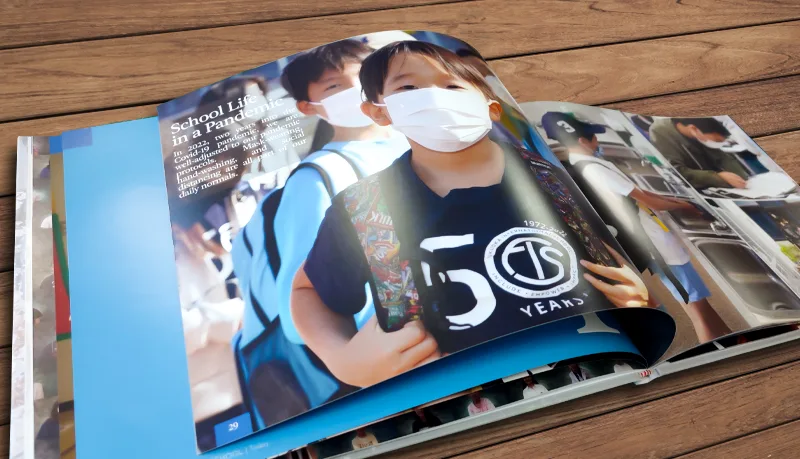
Organizing sections
Organizing your yearbook into well-defined sections helps readers navigate through the publication with ease. Consider dividing your yearbook into sections such as, for example,
- Student life
- Academics
- Sports
- Clubs and organizations
- Special features
- Student testimonies
- Interviews
- Memorials
Each section should have an obvious purpose and contribute to the overall narrative of your yearbook. Make sure you achieve a smooth flow between sections by using consistent design elements and transitions. You'll need to think about who will write each section and who will edit and proofread the writing. It's a good idea to have students and staff each take on different aspects of the writing and development of the content, but assign one or two to be collaborative editors to maintain consistency and coherence throughout.
Showcase student life and events
Student life is arguably the core section of your college yearbook as it captures the joy and challenges of college experiences. Include candid photos, anecdotes, and quotations that reflect the vibrant and diverse student community your college enjoys and promotes. Highlight major events such as orientation, homecoming, prom, and graduation. Feature clubs, extracurricular activities, and student-led initiatives to showcase the breadth of opportunities available to students. Students themselves should write and contribute most of this content.
Highlight academic achievements
Academic life is, clearly, another vital aspect of the college experience. Dedicate a section of your yearbook to showcasing your students' academic achievements, innovative projects, and noteworthy accomplishments. Include photos and profiles of faculty members, valedictorians, and students who have excelled academically. Feature stories about research projects, internships, and academic events that exemplify the intellectual growth and achievements of your college community.
Celebrate sports and athletics
Sports and athletics are an integral part of college life for many students, fostering teamwork, discipline, and school spirit. Devote a section of your yearbook to celebrate the achievements and memorable moments of your sports teams and outstanding athletes from across the college. Include action shots, team photos, and profiles of standout athletes. Highlight significant games, championships, and individual accomplishments. Strive to capture the camaraderie and dedication of student-athletes through quotations, anecdotes, interviews, and behind-the-scenes stories.
Recognize clubs and organizations
Clubs and organizations give students the opportunity to make a difference, have an impact, and develop communication skills, participation, shoulder responsibility, and build community. Your yearbook should have a space to showcase the diverse interests, activities, and achievements of student-led clubs and organizations. Include group photos, event highlights, and profiles of club leaders. Feature stories that capture the passion, impact, and creativity of these organizations. Encourage students to share their experiences and reflections on their involvement in clubs and organizations.
Include special features and memorials
Special features and memorials provide an opportunity to commemorate significant moments and outstanding individuals in your college community. Including special features such as, for example,
- Senior Spotlights
- Year-in-Review
- Faculty Spotlights
- Alumni Reflections
- Where Are They Now?
- Innovation and Impact
You can also memorials and obituaries to honor students, faculty, or staff members who have passed away during their time at the college. These sections should be thoughtful, respectful, and emphasize the positive impact these individuals have had on the college community.
How to write great copy for your college yearbook
Great copy is an essential component of a truly memorable yearbook. Well-crafted headlines, captions, profiles, quotations, and anecdotes combined with clear, entertaining, informative prose with the right balance between informality and seriousness will bring your yearbook to life and evoke emotional and thoughtful responses in readers. Let's explore some key strategies for writing this kind of engaging copy.
• Craft compelling headlines
Headlines should be concise, descriptive, and attention-grabbing. Try to make yours provide a glimpse into the content of the page while also provoking curiosity and encouraging readers to explore further. Use action verbs, intriguing phrases, and wordplay to make your headlines memorable. Use relevant keywords to create a cohesive narrative throughout the publication.
• Captions and descriptions
Captions and descriptions provide context and enhance the visual impact of your yearbook photos. Keep captions concise and informative, communicating the value of the moment or event portrayed in the photo. Use descriptive language, vivid imagery, and storytelling techniques to engage readers' imagination and emotions. Highlight key details, emotions, and memories associated with each photo.
• Personalize student profiles
Student profiles offer an opportunity to showcase the unique personalities, achievements, and aspirations of your students. Write profiles that go beyond basic information, allowing individuals to share their passions, challenges, and memorable experiences. Include quotations, anecdotes, and reflections that offer insights into their college journey and aspirations for the future. Personalize profiles with photos and text that allow each student's personality to shine through.
• Adding quotations and testimonials
Quotations and testimonials add authenticity and depth to your yearbook. Include quotations from students, faculty, alumni, and notable individuals who have impacted your college community. Choose quotations that are inspiring, thought-provoking, or reflect important or unusual aspects of the college experience. Testimonials from faculty, staff, or alumni can provide valuable insights and perspectives on the transformative power of education and the college community and inspire and encourage new and prospective students while offering role models and aspirational perspectives to recent graduates.
• Telling stories and anecdotes
Stories and anecdotes from students and staff help to bring your college yearbook to life, adding personal color and creating a narrative structure that entertains readers as much as it offers insight and information. Share memorable moments, funny incidents, or heartwarming stories. Use storytelling techniques found in most creative non-fiction, such as vivid and precise descriptions, dialogue, and even suspense to engage readers' emotions and imagination. Personalize stories by including the perspectives and voices of the individuals involved. Working on this content for the yearbook is a great opportunity to get a cohort of students and others working together collaboratively while developing their writing, design, and editorial skills.
• Editing and proofreading
Editing and proofreading are essential steps in ensuring the quality and professionalism of your yearbook. You may wish to engage the services of a third-party professional editor. Otherwise, select two or three able students to form an editorial group. Their task will be to review and revise all the content, paying attention to grammar, spelling, punctuation, and consistency. It's often a good idea to encourage the wider college community to feedback with ideas and suggestions, too. Solicit input from your yearbook team, faculty advisors, and peers to identify areas for improvement and make sure you maintain clarity and coherence. The editorial team should then make revisions based on feedback and their own reading before they conduct a final proofreading to eliminate any remaining errors.
Printing and Production
Printing and production are the final stages in producing a first class college yearbook. Most colleges will need to work with a reputable offset printer to get the quality of printing and binding that a college yearbook demands, coupled with the considerable cost savings when printing several hundred—or even thousands—of copies compared to digital printing services. Pay attention to the following considerations to ensure a smooth and successful printing process:
• Understand printing specifications
Familiarize yourself with the printing specifications and requirements of your chosen printing vendor. Obviously, we hope that will be QinPrinting, but even if you choose another service, these factors will always be relevant. This includes understanding:
- acceptable file formats (for offset printing, that's usually a PDF exported from professional level software such as Adobe Illustrator and InDesign)
- image resolution (a minimum of 300 dpi for crisp reproduction)
- color profiles (typically CMYK or Pantone settings)
- 0.125 bleed setting
Prepare your yearbook files with care, following your printer's requirements to make sure you get optimal print quality and accuracy. If you work with us, our team of experts will help and guide you through every step as much as you need. We'll also manually check all your files before going to print. If we find any errors, we'll fix them for you if they're small, or explain them to you and help you sort them out if they're more complex. This is a standard part of our customer service and we will not go to press until we're 100% sure that your files are perfect and your product will be everything you hope for and more.
• Selecting paper and cover options
Choose high-quality paper and cover materials that enhance the overall look and feel of your yearbook. Consider factors such as paper weight, finish, durability, and sustainability. For a hardcover yearbook, you'll usually need to select several papers—for the cover, for the interior text, for photographic spreads, and end sheet papers, for example—so take time to understand the qualities and best uses of the papers available. At QinPrinting we have literally hundreds of paper options, so we will have everything you need. Ask us for our paper sample book and we'll gladly send you a copy to examine for the cost of mailing it to you.
Select a cover and binding option that complements your design and reflects the theme and spirit of your college and the length and complexity of your yearbook. The most popular bindings for yearbooks are hardcovers or perfect binding (paperback). It's also worth exploring options such as matte and gloss varnishing, lamination, or textured finishes and special features such as foil stamping, embossing, and spot UV coating to add visual interest and tactile appeal.
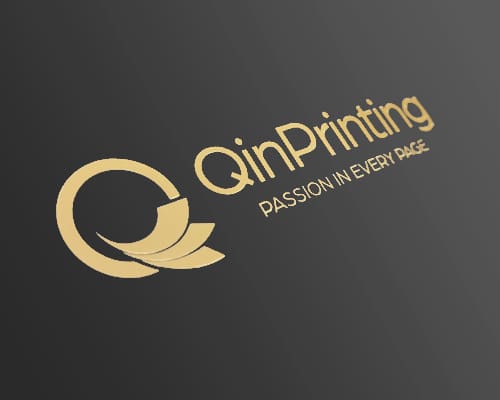

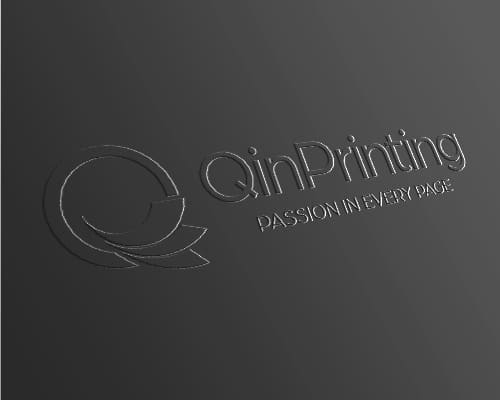
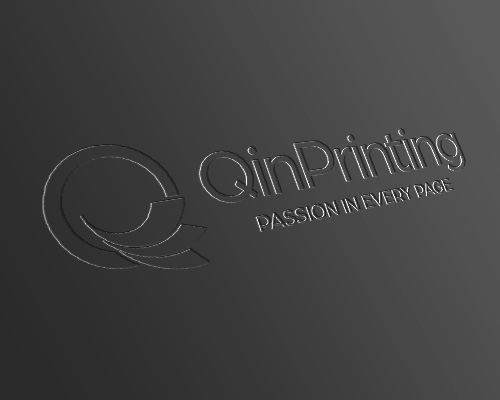
Promoting and distributing the college yearbook
Once you receive your printed yearbooks, you'll need to distribute them. But promotion activities should begin long before the yearbook goes to press. Promoting and distributing your yearbook is clearly vital to make sure that all your hard work pays off. It's a good idea to create a marketing plan to generate buzz and excitement around your yearbook. This is another great opportunity for students and staff alike to develop and use their skills in a marketing and promotion team. Use social media platforms, college newsletters, and campus events to spread the word. Tease sneak peeks and behind-the-scenes content to build anticipation and engage with your college community by hosting contests, giveaways, or interactive events related to the yearbook.
You can also organize special events to celebrate the launch of your college yearbook. Host a yearbook signing party, for example, where students can exchange messages and autographs. Collaborate with local businesses or sponsors to provide refreshments or prizes. Use this opportunity to showcase the yearbook, express gratitude to the yearbook teams, and celebrate the achievements of your college community.
You'll need to plan a smooth and organized distribution process to make sure that every student receives their yearbook. Establish designated distribution locations and time slots to avoid overcrowding and confusion. You might also consider providing personalized bookplates or dedications to enhance the personal connection students feel with their yearbooks. Communicate distribution details clearly in public spaces both online and offline and provide options for students who may have missed the distribution event.
Preserving and archiving the yearbook
Preserving and archiving your college yearbooks guarantees their long-term accessibility and preservation as an ongoing historical record. Get students from the IT department to generate digital copies of your yearbook and store them in multiple secure locations, locally on the college and library computers and in the Cloud. Consider uploading your yearbook to public online platforms or digital archives such as archive.org to promote the college and furnish a public record. Protect digital copies with file formats, metadata, and backup systems. Explore options for online access, allowing alumni and future generations to revisit and explore your yearbook in the years and decades to come.
Proper physical storage is also essential for preserving the integrity of your archived college yearbooks. Store physical copies in archival-quality boxes or sleeves to protect them from light, moisture, and other damaging factors. Keep yearbooks in a climate-controlled environment to prevent deterioration. Regularly inspect and maintain physical copies, checking for signs of damage or degradation.
Consider establishing a yearbook archive within your college or university. Work with the institution's library or archives department to ensure the long-term preservation and accessibility of your yearbook. Collaborate with alumni associations or historical societies to make sure that future generations can access and appreciate the valuable historical and cultural records contained within your yearbook.
Talk to us!
Designing a college yearbook is a rewarding and creative endeavor that allows you to capture the spirit and memories of your students' college experience. By following the steps and strategies outlined in this post, you can create a valuable yearbook that your college community will cherish long into the future. Remember to plan carefully, focus on engaging student groups and teams in all aspects of design and content, and pay attention to the details of printing, distribution, and preservation.
If you're taking on the primary responsibility for designing and printing your college's yearbook—and you'd like to deliver a professional-looking yearbook of unparalleled quality and at an unbeatable price—we should talk. Get in touch today—either by telephone, email, Skype, or our simple contact form—to chat through your needs or to ask for a no-obligation quote. We can't wait to help you make your next yearbook, one of which the entire college community can be proud and students and staff alike will treasure for decades to come.





